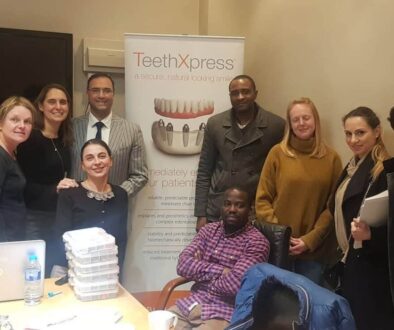Maintaining healthy gums is essential for optimal oral health. But what happens when you notice a hole in your gums? This condition can be alarming, often signalling an underlying issue such as gum disease, infection, or periodontal problems. In this comprehensive guide by Chrysanth Dental, we’ll explain everything you need to know about understanding a hole in gum, what it means, and how to heal it, including causes, symptoms, and effective treatment options.
Why Gum Health Matters
Your gums do more than just hold your teeth in place; they play a vital role in protecting your oral health and supporting your smile. Healthy gums act as a seal, shielding the roots of your teeth from bacteria and preventing decay. However, when gum tissue becomes damaged or infected, you may notice holes in your gums, pain, or sensitivity. Ignoring these warning signs can lead to severe gum disease, bone loss, and even tooth extraction. Understanding the causes and seeking early treatment can help you maintain a confident and healthy smile.
What Does a Hole in the Gum Mean?
A hole in the gum refers to a small indentation, crater, or open pocket in the gum tissue. It can appear near the gum line, between teeth, or around the site of a tooth extraction or wisdom tooth removal.
These gum holes can be caused by bacterial infections, periodontal disease, or tissue loss due to improper healing. In some cases, they may indicate necrotising periodontal disease, a rare form of gum infection that causes tissue death and painful ulcers.
If left untreated, a hole in your gums can expose the roots of your teeth, allowing bacteria to eat away at the gum region and cause further complications.
Common Causes of Gum Holes
There are several potential causes for gum holes, including periodontal (gum) disease, poor oral hygiene, wisdom tooth extraction, trauma or injury, infections, and gum recession. Advanced gum infections like chronic periodontitis can lead to deep pockets or holes. Inadequate brushing or flossing regularly allows plaque buildup, which hardens into tartar and damages gums. After extraction, the open tooth socket can sometimes heal slowly, creating a visible hole.
Accidentally brushing too hard or using a toothpick aggressively can injure the gum tissue. Bacterial or viral infections can erode soft tissue, especially in individuals with a weakened immune system. When gums pull away from teeth, it may expose roots and create the appearance of holes.
Signs and Symptoms to Watch For
If you suspect a gum hole or developing infection, look out for visible indentations, bleeding gums, pain or tenderness, bad breath, swollen gums, or loose teeth. Early detection of these signs is key to preventing gum disease and promoting faster healing.
The Role of Gum Disease in Gum Holes
Gum disease, or periodontal disease, is one of the most common reasons people develop holes in their gums. It progresses in stages: gingivitis (early stage) caused by plaque buildup, leading to inflammation and bleeding gums; periodontitis (advanced stage), where infection spreads deeper, damaging gum tissue and causing pockets or holes; and chronic or necrotising periodontitis, which may lead to tissue death and deep craters in the gums. Without professional cleaning or scaling and root planing, bacteria can thrive, causing further bone and tissue damage.
How Gum Recession Contributes to Holes
Gum recession occurs when gum tissue pulls away from teeth, exposing the tooth roots. This not only makes your teeth more sensitive but also creates small gum holes where food particles and bacteria collect. Factors that contribute to receding gums include brushing too aggressively instead of using a soft-bristled toothbrush, tobacco use, hormonal changes, genetic predisposition, and poor dental hygiene. Once recession begins, treatment may involve gum grafting or regenerative procedures to restore healthy tissue and prevent further damage.
Bacterial and Viral Infections Affecting the Gum Line
Some gum holes are caused by bacterial infections like necrotising periodontal disease, which can lead to painful ulcers and tissue necrosis. In rare cases, viral infections or systemic health conditions can also weaken gum tissue, making it prone to erosion. If you experience severe pain, swelling, or pus discharge, it’s crucial to visit a dentist immediately. Early intervention helps prevent advanced forms of infection that could affect both oral and respiratory health.
Diagnosis: How Dentists Identify Gum Holes
A professional diagnosis is essential to determine the underlying cause of a hole in the gum. At Chrysanth Dental, dentists may perform a visual examination and check gum pocket depth, take dental X-rays to assess bone loss, conduct a periodontal probe test, and review your oral hygiene practices and health history. Identifying whether the issue stems from gum disease, tooth extraction, or infection ensures accurate treatment planning.
Treatment Options for a Hole in the Gum
The treatment for gum holes depends on the severity and cause. Common procedures include scaling and root planing (deep cleaning to remove plaque and tartar below the gum line), antibiotic therapy to reduce bacterial infection and inflammation, gum grafting to replace lost tissue, flap surgery for deep cleaning, and regenerative procedures to encourage tissue regeneration. Your dentist at Chrysanth Dental will recommend the best treatment options after evaluating the affected area.
Healing Process: What to Expect
The healing process varies depending on treatment type. Minor gum holes may heal within weeks, while periodontal surgery or gum grafting can take a few months. To promote healing, avoid sugary foods and smoking, brush gently with a soft-bristled brush, floss daily to remove trapped food particles, use antiseptic mouthwash as directed by your dentist, and attend regular check-ups for professional cleaning. Maintaining good oral hygiene accelerates healing and prevents further infections.
Preventing Gum Holes and Further Damage
Preventing gum holes starts with proactive care: brush twice daily using fluoride toothpaste, floss regularly to remove plaque, visit your dentist every six months, quit smoking to improve blood circulation in gums, and eat a balanced diet rich in vitamins and minerals. Adopting these good oral hygiene practices ensures healthy gums and reduces your risk of developing gum recession or gum disease.
The Importance of Regular Dental Check-Ups
Regular dental check-ups are vital for early detection of gum disease or tissue abnormalities. Dentists can perform professional cleaning and identify potential issues before they worsen. At Chrysanth Dental, our specialists focus on preventive care, helping you maintain optimal oral health and a healthy smile through personalised treatment plans.
Home Care and Good Oral Hygiene Practices
Daily care is key to maintaining healthy gums. Brush with circular motions to protect gum tissue, choose soft-bristled toothbrushes to prevent irritation, replace toothbrushes every three months, avoid sugary foods that promote plaque, and rinse after meals to reduce bacterial growth. Consistent care reduces your risk of developing gum disease, bone loss, and other symptoms associated with gum holes.
Frequently Asked Questions
1. Can a hole in the gum heal on its own?
Minor holes may heal naturally if caused by injury or mild infection, but persistent holes require professional dental treatment.
2. Is a hole in my gum always a sign of gum disease?
Not always, but it can indicate early stages of periodontitis or gum recession, so professional evaluation is crucial.
3. How long does it take to heal a gum hole?
Healing time varies from a few weeks to months depending on the treatment and underlying cause.
4. Can I prevent gum holes with good oral hygiene?
Yes, flossing daily, regular brushing, and routine check-ups are key preventive measures.
5. What are the treatment options for severe cases?
Severe cases may require flap surgery, gum grafting, or regenerative procedures to rebuild lost tissue.
6. Can gum holes lead to tooth loss?
If left untreated, advanced gum disease can cause bone loss and ultimately lead to tooth extraction.
Conclusion
A hole in your gum is more than a cosmetic concern; it’s often a sign of underlying dental issues that need immediate attention. With early diagnosis, professional cleaning, and good oral hygiene, you can restore your gum health and prevent future complications. If you’ve noticed changes in your gums or suspect an infection, schedule a consultation with Chrysanth Dental today. Our expert team is committed to helping you achieve a confident and healthy smile through tailored treatments and compassionate care.
Disclaimer: This article is intended for general informational purposes only and should not be used as a substitute for professional dental advice, diagnosis, or treatment. Always consult a qualified dentist or healthcare provider regarding any concerns about your oral health.




